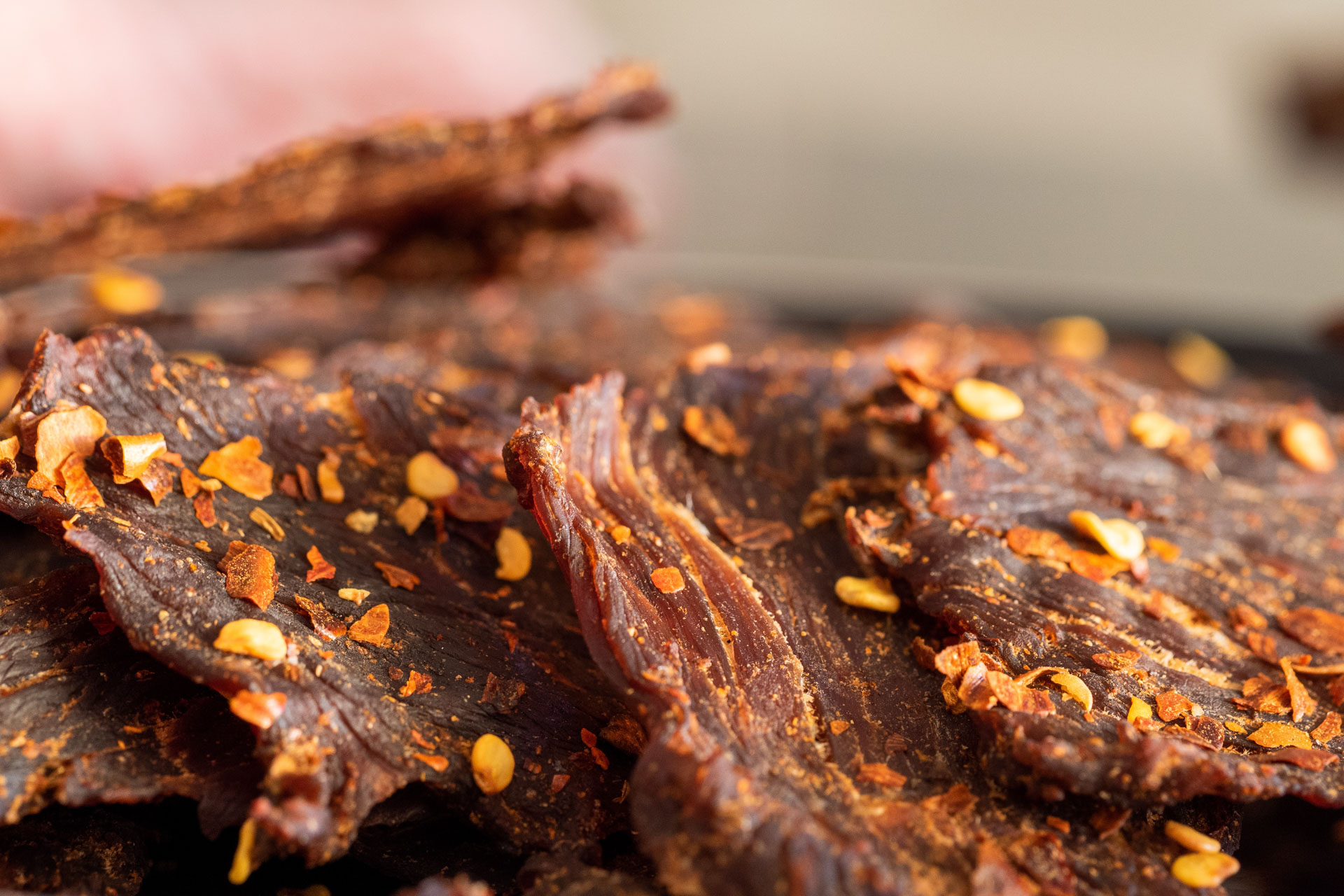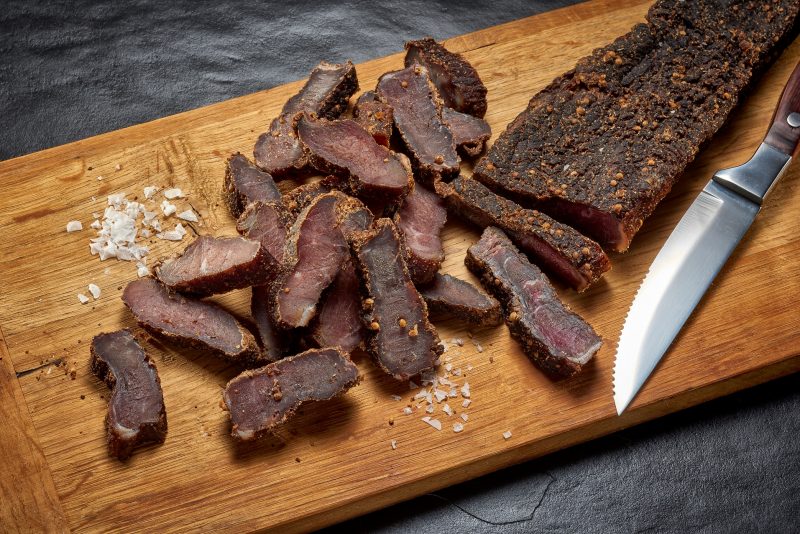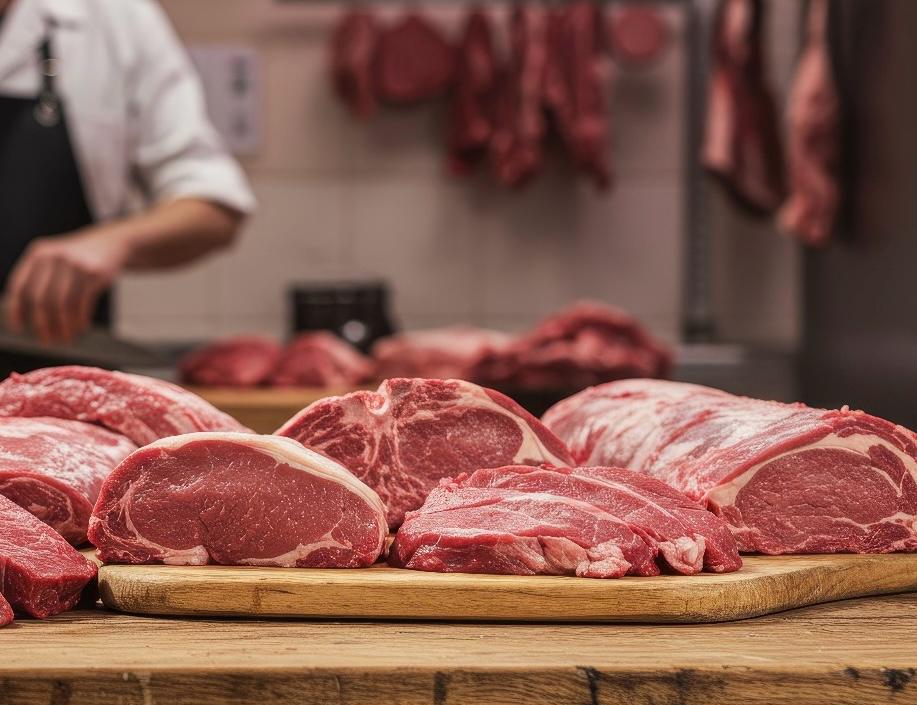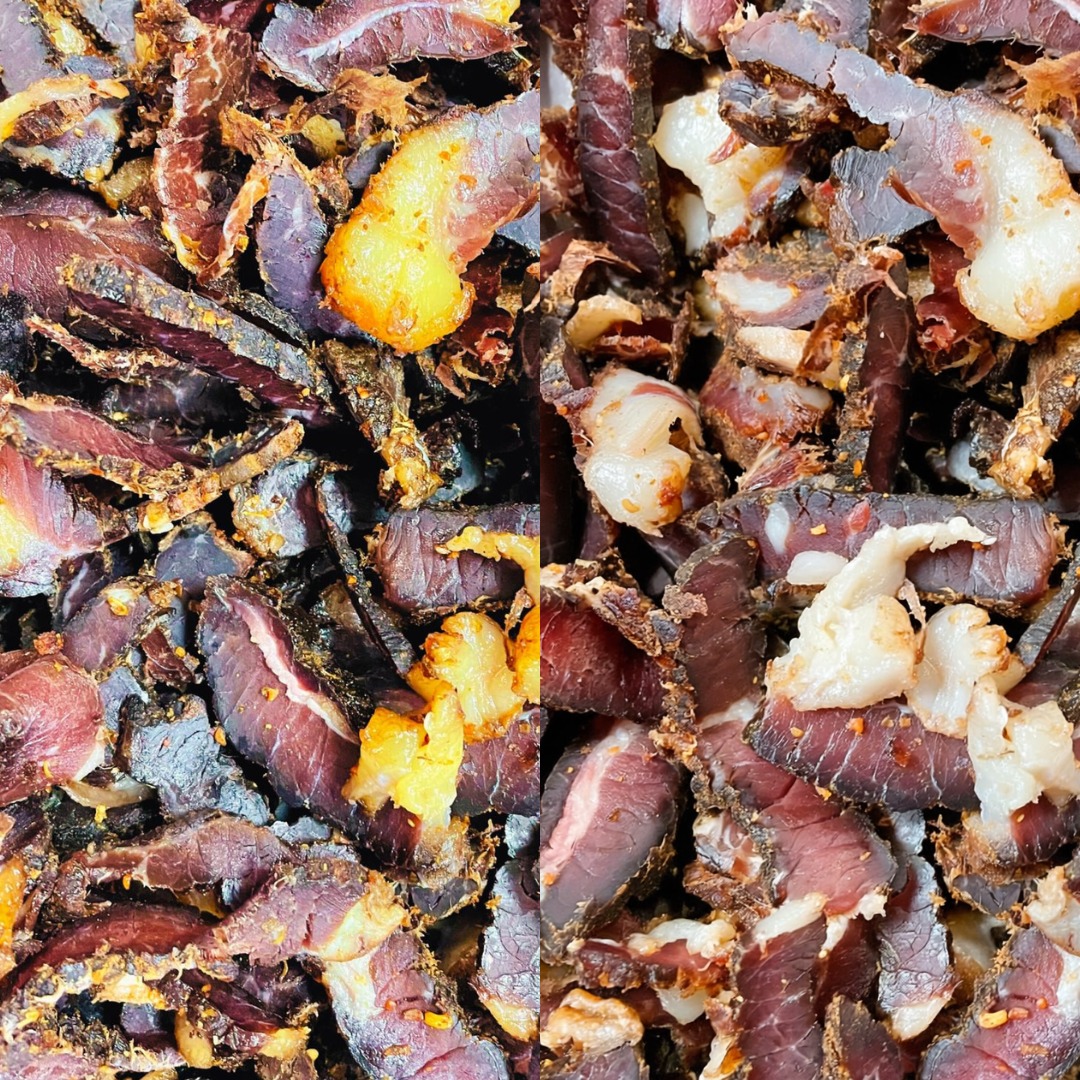Choosing The Right Meat: Best Cuts For Perfect Biltong
The journey to creating exceptional biltong begins long before the spices are mixed or the drying begins. At Kalahari Khabu, we have spent decades perfecting the art of biltong preparation, and we can confidently say that selecting the right biltong meat is perhaps the most crucial step in the entire process.
What Is Beef Biltong?
Before diving into specific cuts, let us clarify what exactly constitutes authentic beef biltong.
Unlike other dried meat products, traditional biltong is made by curing large cuts of beef with vinegar, salt, and spices before air-drying them at room temperature for several days. This process creates a unique product with deep, complex flavors and a distinctive texture that can range from soft and moist to hard and dry depending on your preference.
What sets apart the finest biltong is not just the spice mix or drying technique but the quality and type of meat used. The best biltong meat will have minimal fat, good marbling, and a consistent grain structure that allows for even drying and flavor absorption.
The Characteristics Of Ideal Biltong Meat
When selecting the best cut of meat for biltong, several key factors should guide your choice:
Leanness
Quality biltong requires meat with minimal exterior fat. While some marbling adds flavor, large fat deposits can turn rancid during the drying process. The ideal biltong meat cut features a clean, lean structure with fat that can be easily trimmed before preparation.
Muscle Grain
The grain direction in your chosen cut dramatically affects the eating experience. Cuts with a consistent, long grain create biltong that can be pulled apart into satisfying strips, enhancing the textural pleasure of eating this delicacy.
Connective Tissue
Minimal connective tissue is preferable as it can create tough spots in your finished biltong. The best cuts for biltong have clean muscle separation, allowing for easy slicing and consistent drying.
Thickness Potential
Cuts that can be easily sliced into thick, uniform strips (About 2-3cm thick) work best. Irregularly shaped cuts make it difficult to achieve consistent drying throughout the piece.
Best Cuts For Biltong: Our Top Recommendations
After years of experimentation and tradition, we have identified several beef cuts that consistently produce superior biltong. Each has its unique characteristics that might make it perfect for your specific preferences.
Silverside
Silverside remains the most popular biltong meat cut among South African biltong makers, and for good reason. This lean cut from the hindquarter offers:
- Minimal fat content
- Long, consistent grain running along the length
- Excellent flavor absorption
- Large size allowing for uniform cuts
Silverside creates a clean-tasting biltong with excellent texture. It is particularly suited for those new to biltong making as it forgives slight variations in drying time by remaining tender even when thoroughly dried.
Topside
For those seeking the very best cut of meat for biltong, topside often claims the crown. Slightly more expensive than silverside but offering:
- Superior tenderness
- Finer-grain structure
- Rich, beefy flavor profile
- Excellent moisture retention
Topside creates biltong with a melt-in-your-mouth quality that showcases the true potential of well-made biltong. It works exceptionally well for medium-dry biltong where some internal moisture is retained.
Eye Of Round
Eye of round has gained popularity among commercial biltong producers for its reliability:
- Near-perfect cylindrical shape for uniform cutting
- Very lean composition requiring minimal trimming
- Dense muscle structure that holds shape during drying
- Good value for money
This cut creates biltong with a firm bite and clean flavor, making it ideal for those who prefer their biltong on the drier side. Its consistent shape also means more predictable drying times.
Sirloin
While not traditionally the best meat for biltong due to higher fat content, sirloin offers an interesting option for those prioritizing flavor:
- Rich, pronounced beef taste
- Natural tenderness
- Good marbling for flavor enhancement
- Works well with shorter drying times
Sirloin creates a more indulgent, flavorful biltong but requires careful fat trimming and slightly shorter drying times to prevent rancidity. It is best suited for those who prefer their biltong on the moist side.
Blade Roast
When discussing topside vs. blade roast for biltong, blade presents an economical alternative with:
- Good value for money
- Decent fat distribution that can be trimmed
- Rich flavor when properly prepared
- Works well with robust spicing
While not as premium as topside, blade roast can produce very satisfying biltong, especially when enhanced with stronger spice blends. Its varying grain direction means it does not pull apart in long strips like silverside, but many enjoy its texture nonetheless.
Alternative Biltong Meats
While beef dominates the biltong world, traditional South African biltong embraces various meat types. These alternatives create distinctive types of biltong that expand the culinary experience:
Game Meat Biltong
Game meat connects us to the original biltong tradition:
- Venison creates a lean, earthy biltong with complex flavor notes
- Kudu and springbok offer extremely tender texture with subtle gaminess
- Ostrich produces a very lean biltong with a rich red color
- Blesbok and impala provide excellent alternatives to beef with lower fat content
Game meats generally require slightly different spicing, often with added coriander to complement their natural flavors. The drying times can also be shorter due to their naturally lower fat content.
Unusual Alternatives
For the adventurous, these unconventional options create unique types of biltong:
- Chicken creates a lighter, more delicate biltong (Requires careful food safety measures)
- Pork can make a sweeter, more succulent product
- Fish biltong offers a completely different flavor dimension
- Lamb creates a distinctively flavored biltong popular in certain regions
Each alternative biltong meat brings its own character and may require adjustments to traditional recipes and techniques. We recommend mastering beef biltong before exploring these creative alternatives.
Preparing Your Chosen Cut
Once you have selected the best biltong meat for your taste, proper preparation maximises its potential:
Trimming
Remove all exterior fat and sinew while leaving intramuscular marbling intact. For cuts like sirloin, be particularly thorough with fat removal to prevent rancidity during drying.
Cutting Direction
Always slice with the grain for traditional biltong. This might seem counterintuitive to those familiar with steak preparation (Where cutting against the grain increases tenderness), but biltong benefits from with-grain cutting as it creates the characteristic stringy texture that pulls apart pleasingly.
Thickness Consistency
Maintain uniform thickness across all your biltong pieces, ideally between 2-3cm thick. Inconsistent thickness leads to uneven drying, with thinner sections becoming overdried while thicker parts might retain unsafe moisture levels.
Size Considerations
Cut your best cut for biltong into manageable strips roughly 20-30cm long. This length works well for hanging during the drying process while creating convenient-sized pieces for consumption.
Aging Considerations
Many biltong enthusiasts overlook the impact of meat ageing on the final product. Properly aged beef often makes superior biltong due to:
- Enhanced flavor development through natural enzyme activity
- Improved tenderness from protein breakdown
- Reduced moisture content before the curing process begins
- More pronounced beefy notes in the finished product
When possible, select beef that has been aged for at least 21 days for the very best biltong meat experience. This ageing can happen either at the butcher’s or in your refrigerator under carefully controlled conditions.
Special Considerations For Commercial Production
For those making biltong commercially, additional factors influence the best cuts for biltong:
- Cost efficiency becomes more critical, making eye of round and silverside popular choices
- Consistency between batches necessitates standardized cuts with predictable drying characteristics
- Shelf stability might require leaner cuts with absolutely minimal fat content
- Large-scale production benefits from cuts that can be mechanically sliced with consistent results
Commercial producers often develop relationships with specific meat suppliers to ensure consistent quality and characteristics in their biltong meat.
Sourcing The Best Biltong Meat
The source of your meat significantly impacts quality. Consider these options:
Butcher Relationships
Developing a relationship with a knowledgeable butcher brings several advantages:
- Access to properly aged meat
- Cuts trimmed to your specifications
- Expert advice on seasonal variations
- Potentially better prices for bulk purchases
A good butcher can become your partner in creating exceptional biltong, often setting aside prime cuts specifically for your biltong-making needs.
Farmers’ Markets
Direct relationships with farmers offer:
- Knowledge of how the animals were raised
- Greater transparency about feed and conditions
- Often more ethically produced options
- Unique breeds with distinctive flavor profiles
Many biltong connoisseurs find that grass-fed beef creates a more complex, flavorful end product compared to grain-finished alternatives.
Specialist Suppliers
Some meat suppliers now cater specifically to biltong makers, offering:
- Pre-cut biltong meat in ready-to-process strips
- Consistent sizing and fat trimming
- Bulk ordering options
- Meat already aged appropriately for biltong production
While potentially more expensive, these specialists save considerable preparation time and ensure consistency.
Understanding Different Beef Grades
The grading system for beef varies by country, but generally focuses on marbling, maturity, and color. For biltong purposes:
- Prime/Grade A cuts offer excellent flavor but require more fat trimming
- Choice/Grade B provide a good balance of quality and value
- Select/Grade C can work well but may produce slightly tougher biltong
The best biltong meat typically comes from younger animals (Under 30 months) where the meat has good color and moderate marbling without excessive fat deposits.
Conclusion
The best cuts for biltong offer the perfect balance of leanness, grain structure, and flavor potential. Whether you choose the traditional silverside, premium topside, consistent eye of round, flavorful sirloin, or economical blade roast, understanding the characteristics of each cut empowers you to create biltong perfectly suited to your preferences.
Remember that biltong making is both science and art. The science begins with proper meat selection, but the art comes through in how you transform that raw material into the beloved South African delicacy that has captured hearts worldwide. With the knowledge of the best meat for biltong now in your hands, your biltong journey has a solid foundation for success!






